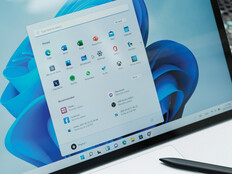4 Reasons Windows 10 Makes Sense for Higher Ed
Microsoft's next big operating system upgrade arrived Wednesday, bringing a host of new features, including several that educators may find useful.
Users upgrading to Windows 10 will immediately notice the dramatic overhaul Microsoft's designers have given the operating system's user interface, including the return of the Start menu, which was removed from Windows 8. But dig a little deeper and you'll find features that could help educators organize, present and conduct research more efficiently.
Cortana Injects Personality into Research
Microsoft's new personal digital assistant, Cortana, is one of the biggest additions to Windows 10. First introduced on Windows Phones in 2014, Windows 10 marks Cortana’s first foray onto desktops and notebooks.
By speaking to their devices, users can call up Cortana for help across a variety of program features. She will even lend a hand to students and educators with research projects. Cortana can also help keep users on task, says Martha Jez, the director of professional development programs at Fair Chance Learning.
“Beyond reminding you of appointments, due dates, and traffic concerns Cortana really supports the execution of required academic tasks in the day. This is essential for students who need support in their executive functioning,” writes Jez.
Mark Up the Internet with Edge and Web Note
Packed in with the new operating system is Microsoft's new default web browser, Edge, a quicker and less resource-heavy alternative to Internet Explorer.
Along with Edge comes a new feature called Web Note, which allows users to draw on websites using a stylus or a finger while working on a tablet or a touchscreen-enabled PC and then save the annotation to Microsoft OneNote for sharing. Educators fond of tablet-led presentations are sure to find this app useful.
“Obviously this works best on a touchscreen Windows device like a Surface, but it works with a mouse too, and will be perfect for interactive whiteboards,” writes educator Jonathan Wylie.
A New Way to Log In: Windows Hello
Even before your online class begins, helping a classroom full of students log in to a school's network can be a chore. But Windows 10 introduces a new way to streamline the login process: Windows Hello.
Using a 3D camera, Windows Hello allows users to log in using just their faces. The feature authenticates users by verifying that the person in front of the computer matches a 3D image of approved users.
However, this special feature requires devices to be equipped with RealSense 3D cameras, which are new to the market. The cameras are currently available in only a few configurations, including the HP Sprout. A fingerprint scanner can also be used to authenticate logins without using a password, but the 3D camera login is Hello's big feature.
Continuum Powers Mobility
With smartphones and tablets everywhere today, schoolwork doesn’t always begin — or end — on a desktop. Use of Windows 10 across devices will allow users to experience seamless transition through Continuum, a new feature that comes built into the new operating system.
Joe Belfiore, Microsoft’s corporate vice president of the operating systems group, says Continuum allows phones to “unleash a full PC experience.”
The upgrade to Windows 10 is free for the first year for consumers who are moving from preexisting installs of Windows 7 or 8.1. Enterprise and education customers will enjoy an expanded set of security, management, deployment and service features when Windows 10 Enterprise and Education editions launch on August 1.









